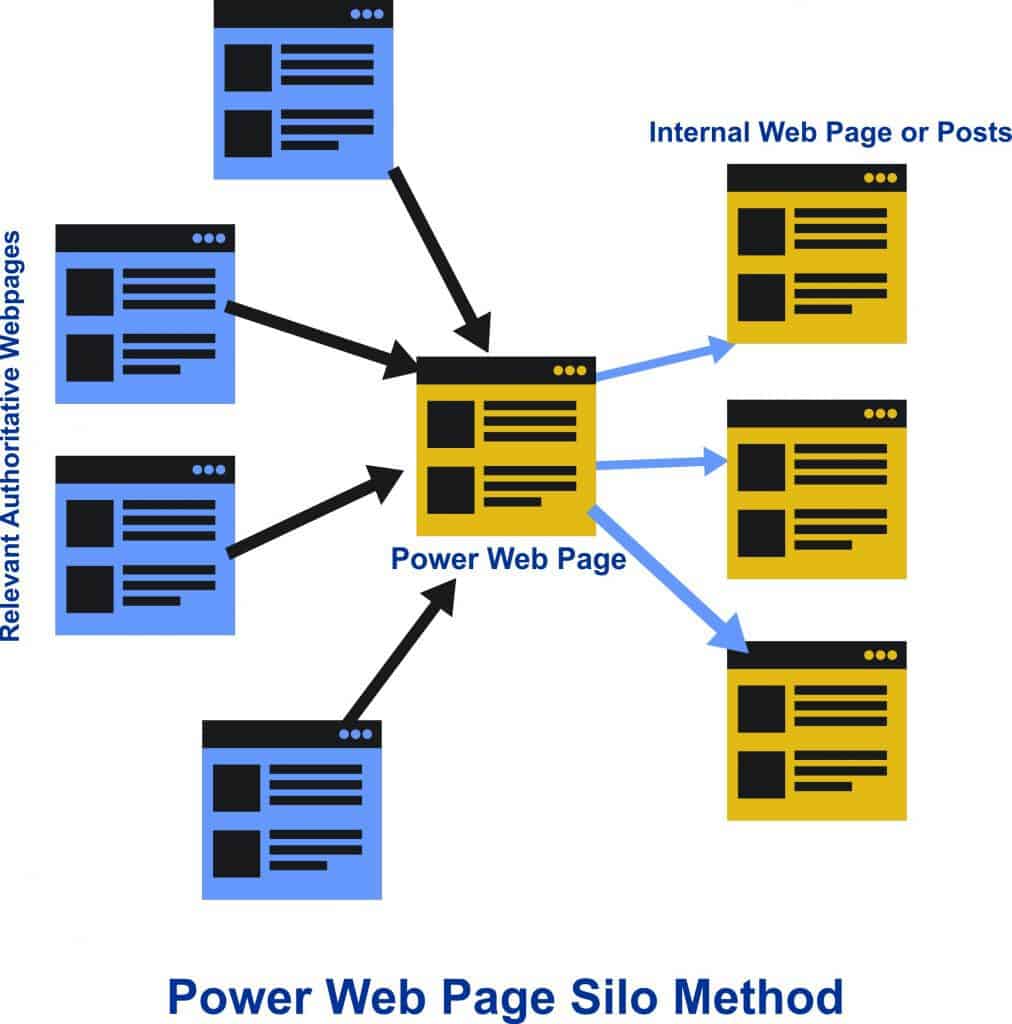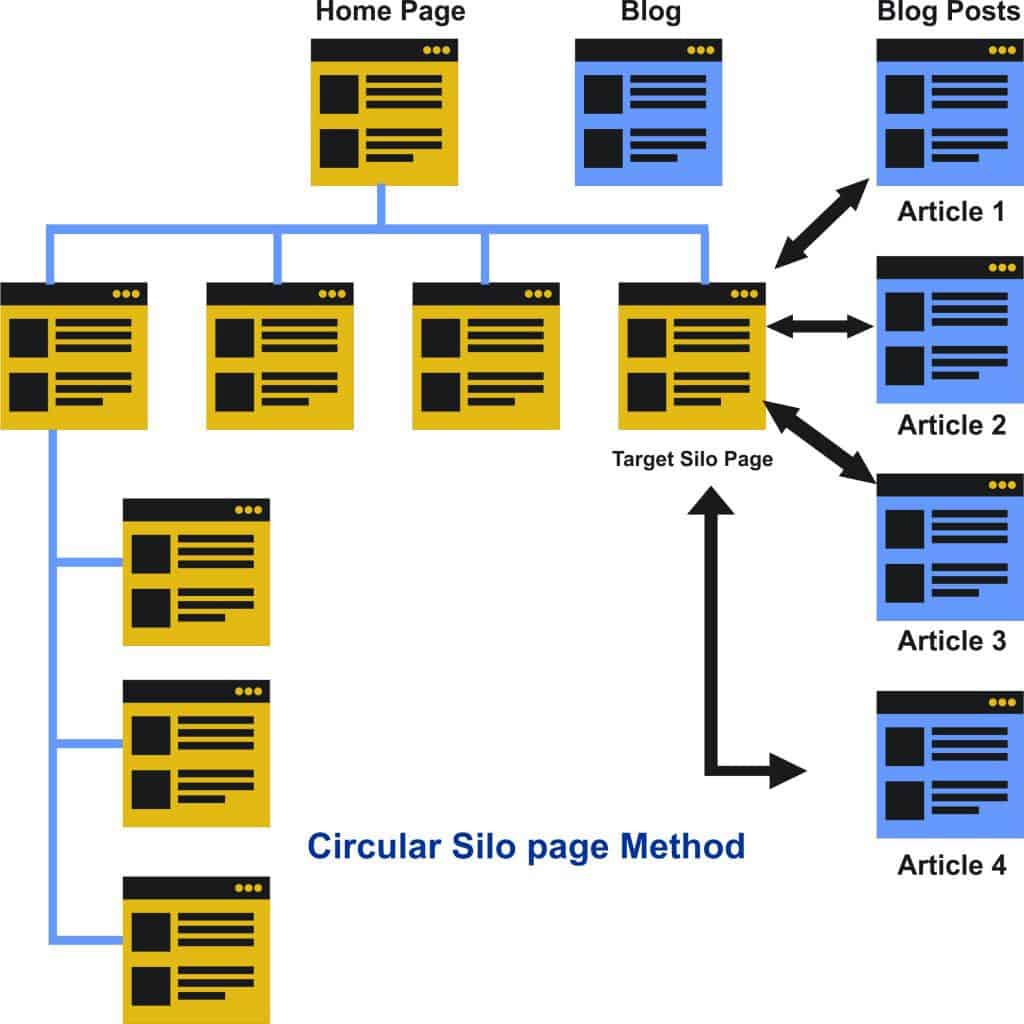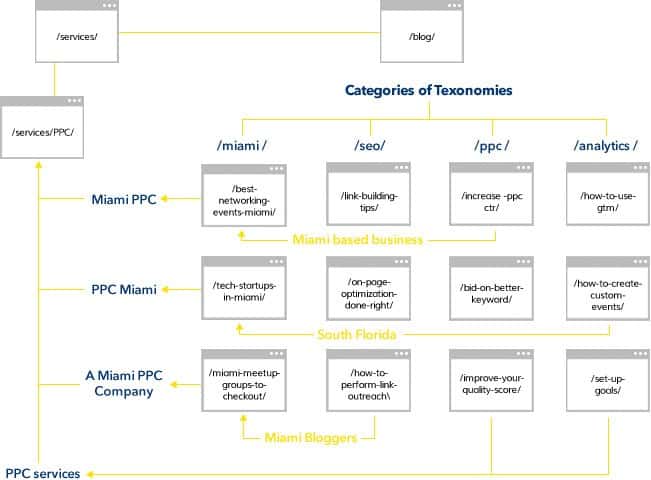Creating Silo for SEO Benefits

In previous articles, I have talked about various on page seo tactics.
Here i am going to describe about SEO silo in brief.
This silo plays an important role in improving on page seo and thus ranking on google.
While auditing the website, you also need to check out the SEO silo.
Website silo also known as website architecture ( or SEO silo ) is actually organizing your web pages and blog posts according to a common topic.
This kind of organization of pages and posts help search engine crawlers and human user to understand what is your site is about and helps navigate across the pages and posts.
While redesigning or creating a new website, a designer or developer should consider the overall website architecture.
Kinds of Silos
There are two kinds of seo silos that need to be implemented on a website.
One is Content silo and second one is Link silo.
Let’s talk about them briefly.
A content silo is organizing and grouping your website pages and blog according to the same topic.
When you used to visit libraries how the staffs used to find books, because they used the same grouping process to ease the book search.
Structure your Home page according to your niche or industry.
If you provide services like SEO, PPC, Web Design etc, focus your page for Digital Marketing.
Besides having the stand-alone service pages, about us, mission, contact etc, you need to have a blog section.
The blog will be used to bring organic traffic for different keywords, also help to create a proper silo structure.
Create the blog in subdomain or subdirectory.
Group your blog post in categories. Provide necessary tags to each posts to ease the finding process.
If you need to change the category of a blog post, make sure to use 301 redirect, because categories are included in the URL in most of the CMS ( content management system ).
Link Silo
Link silo means interlinking your pages and blog posts in a precise organised manner so that you can maximise the benefits of internal linking.
The benefits of internal linking in on page SEO is of great importance.
It flows the link juice or equity from the most powerful page to deeper pages or posts.
Help improves indexing more pages because search engine crawlers can crawl more pages.
It improves the user experience and acts as a kind of navigation to relevant content or page.
Find out more about the internal linking process on gotchseo of Nathan Gotch.
There are a few methods to create link silo.
Method 1: From Power Page
In this method you need to find the most powerful pages that has most backlinks from other authoritative websites from Google Search Console > Search traffic > Links to site.
Now create internal links from that page or posts to other highly relevant pages, this will make the link juice or equity flow to other pages or posts.

Method 2: Circular Silo Pages
In this method, we need to create silo blog posts around a particular silo page.
These relevant silo blog posts will link directly to the silo page to create massive relevancy signal.

Create at least 5 blog post about a singular topic related to your target silo page.
Every blog posts must interlink to themselves.
Every blog post must link back to the target silo page.
These blog posts should not link to other silo pages, this will break the relevancy.
Duplicate this process to every silo pages you want to rank.
Method 3: Category Silo Pages

This method is good to rank local pages.
In this method, silo blog posts should contain the terms as category that you want to rank for your silo page.
Such as, you have a silo page and want to rank for the term “Kolkata travel agency”
Now, you need to create categories of such terms “kolkata”, “travel”, “Agency” etc.
Each of these categories should contain highly relevant blog posts.
Each of these blog post should inter link to themselves.
Each of these blog post should link to target silo page with keyword as anchor text.





![63 SEO Terms For Absolute Beginners | With [ Infographic ]](https://www.devchimp.net/wp-content/uploads/2019/08/seo-terms-beginners-768x579.jpg)
